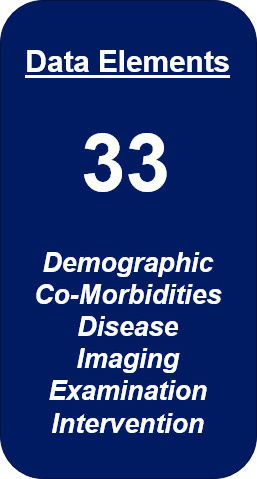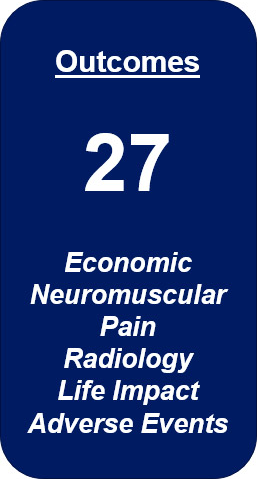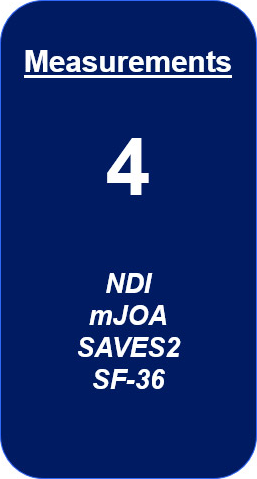Minimum Dataset
In clinical research, information is recorded to monitor and evaluate care. However, unless there is a consistency across research, information can be difficult to interpret or use.
This is the case in Degenerative Cervical Myelopathy (DCM), where information is inconsistent. According to people living with the disease, research has not captured the full effects of DCM.
A solution is to agree a minimum dataset—a list of information that should be recorded as a minimum in all research, including how it should be reported.
Outcomes and Data Elements
Outcomes are the effects of a disease we are trying to change; they are typically measured at multiple time points. However, studies also record other information, which is important to interpret those outcomes. We refer to these as Other Data Elements. Consistency across both categories is essential to ensure research can be interpreted efficiently. We have developed a list of Core Outcomes and Core Data Elements; together we call them the Minimum Dataset that needs to be measured and reported in DCM research.
The process
The Minimum Dataset was established based on systematic reviews, qualitative interviews, Delphi process, and two final virtual consensus meetings using a robust, global, stakeholder-centric process with a broad representation of healthcare professionals and individuals living with DCM.
Results
A core outcome set must not burden researchers by requiring them to measure too many different outcomes. Twenty-seven outcomes were identified and grouped under six domains: adverse events, economic impact, life impact, neuromuscular function, pain, and radiology. Each outcome was categorized according to importance: core, important but not core, or definitely not core.
In advance of the Core Measurement Set consensus meeting, the project team scoped potential measurement instruments that could measure the core outcomes, evaluated the measurement properties of each instrument, and short-listed potential candidates. Factors that were considered were the tools’ quality, popularity, feasibility to use (i.e. not too onerous on the patient) and how relevant they were to the core outcomes.
Four measurement tools were selected by consensus:
- The modified Japanese Orthopaedic Scale (mJOA)
- The SF-36 Life Impact Scale
- The Neck Disability Index
- The Spinal Adverse Events Severity System
These tools were felt to be the best options at present for a Core Measurement Set. All investigators should find opportunities to extend these assessments in their trials, depending on their research question.
The newly established Minimum Dataset, in combination with the top ten priorities, and a definition for the index term, can accelerate research findings and improve outcomes that matter most to all stakeholders.






